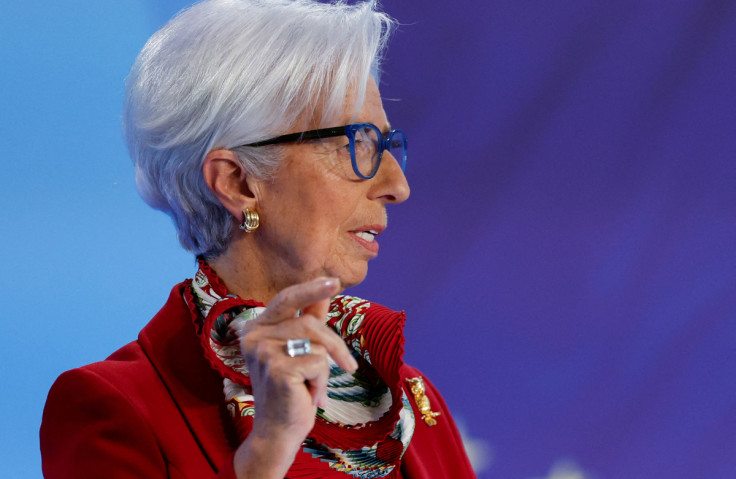Analysis-Investors Stick To Bets On Early End To ECB Hikes As Uncertainty Grows

Investors held tight to bets that banking jitters would rein in the ECB's ability to jack up borrowing costs again in the months ahead, as the central bank delivered a large rate hike on Thursday but wouldn't signal future moves given an uncertain outlook.
The European Central Bank stuck to a 50 basis-point hike, as promised at its previous meeting.
Traders had cast doubt on that move given market turmoil sparked by the collapse of U.S. lender Silicon Valley Bank last week, followed by a rout in Credit Suisse shares spreading banking jitters to Europe this week.
The large increase had still been seen as a coin-toss on Thursday after Credit Suisse secured a $54 billion lifeline from the Swiss central bank that calmed markets.
While the ECB went big, it offered no commitments for the future despite previous calls by several policymakers for bigger moves to contain sticky inflation.
President Christine Lagarde noted it was impossible to determine the future rate path amid "completely elevated" uncertainty stemming from market ructions.
"Given financial instability risks, there's growing uncertainty on future ECB actions beyond this pre-signalled rate hike," said Daniele Antonucci, chief economist and macro strategist at Quintet Private Bank.
With no signals from the ECB for the path ahead, traders continued betting on a roughly 50% chance of a 25 basis-point rate hike in May, then rates peaking around 3.2% by August, according to ICAP data.
Prior to the bank sector turmoil a 50 bps hike in May had been seen as the most likely outcome and rates had been expected to peak at just over 4% by year-end.
Commerzbank lowered its expectations for the terminal rate to 3.5% from 4%, while others stuck to previous calls.
The ECB also said it stood ready not only to preserve price stability, but also financial stability, and would also consider financial data in its assessment of the inflation outlook, mentions absent in previous statements.
"Today, forward guidance ended for good," said Frederik Ducrozet, head of macroeconomic research at Pictet Wealth Management.
"The important bit is that financial and banking stress will be included as inputs into future decisions," he added.
In a demonstration of the tough choices posed for the ECB's policy outlook by banking uncertainty, sources told Reuters that ECB policymakers agreed Thursday's 50 bps hike only after the SNB backed Credit Suisse, and discussions had focused on either the 50 bps move or no hike at all.
VOLATILITY
Investors were reassured that the ECB appeared to be much more data-dependent going forward.
Lagarde emphasized that as the ECB had the tools to provide liquidity to the bloc's financial system if needed, there was no trade-off between financial and price stability.
During the 2020 COVID-19 crisis, the ECB launched an emergency bond buying scheme, calming panicky markets. Last year it unveiled a new anti-fragmentation tool to help contain bond market stress as interest rates rose.
Still, European bank stocks rose just 1.2% on Thursday, still down 12% since last Friday. They were set for their biggest weekly fall since March 2020
Bond yields rose on Thursday, but as traders stuck to shallower rate hike bets, two-year German yields remained over 40 bps lower this week in the biggest such drop since 1992.
Michael Michaelides, fixed income analyst at Carmignac, said he had expected the ECB on Thursday to say it was discussing working on new instruments to backstop the banking sector, but "they didn't even get that far," he said.
Many expected market volatility to continue.
"People will not rush to try and buy up anything...you're not quite sure what the next shoe to drop might be so I think there will be a period of consolidation," said Jason Simpson, senior fixed income strategist at State Street's SPDR ETF business.
Piet Christiansen, chief analyst at Danske Bank, said he was sticking to a call for a 4% peak ECB rate.
"Unless this turns into a macroeconomic crisis then we are ripe for a sell-off and a repricing of rate hike expectations," he said.

© Copyright Thomson Reuters 2024. All rights reserved.





















